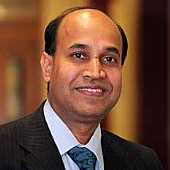Smart Sensor Networks
A special issue of Electronics (ISSN 2079-9292). This special issue belongs to the section "Networks".
Deadline for manuscript submissions: closed (31 March 2020) | Viewed by 30629
Special Issue Editors
Interests: smart sensors; sensing technology; WSN; IoT; ICT; smart grid; energy harvesting
Special Issues, Collections and Topics in MDPI journals
Interests: sensors; chemical synthesis; chemistry; organic synthesis; health science; phytochrome; molecular synthesis
Special Issues, Collections and Topics in MDPI journals
Special Issue Information
Dear Colleagues,
Sensors play a significant role in our everyday life. it is of paramount importance to know our surroundings. The monitoring of surroundings is done with the help of smart, accurate, and reliable sensors. The configuration of smart sensors in the form of a network can measure and collect data from the environment, weather, traffic congestion, air and water pollution, health parameters, human activities and so on. Data collected through sensors enhance our lives and our connections to each other and with our environment, allow real-time monitoring of many phenomena around us, and provide information about the quality of products and services to increase knowledge of the physical and chemical world. The measured data is processed and transmitted via wireless or wired communication technologies to a central station for further processing of data to take corrective and decisive actions.
The advancement in high-quality materials, fabrication technologies, electronics, embedded controllers, and technology for communication as well as the progress towards a better informed, knowledge-based society increase the demand for small size, affordable smart sensors that can provide accurate and reliable data recording, processing, storing, and communication.
This Special Issue solicits the submission of high-quality and unpublished papers as well as extended papers from the 13th International Conference on Sensing Technology to be held during December 2 to 4, 2019 in Sydney, Australia that aim to solve open technical problems and challenges typical of smart sensors and sensor networks. The main aim is to integrate novel approaches efficiently, focusing on the performance evaluation and the comparison with existing solutions. Both theoretical and experimental studies for typical smart sensors and sensor networks including all recent communication methodologies including LoRaWan, LTE, and 5G are encouraged. Furthermore, high-quality review and survey papers are also welcome. Submitted papers from ICST 2019 should be extended to the size of regular research or review articles, with at least a 50% extension of new results.
Paper addressing, but not limited to, the following topics will be considered for publication:
- Smart sensors
- Wireless sensor networks
- Internet of things
- Communication technologies, BT, WiFi, ZigBee, LoRaWAN, and so on
- Smart sensors for home automation and smart home
- Wireless sensors networks for smart homes
- Internet of things-enabled home automation
- Green communications for smart homes
- Energy management systems and networks for smart homes
- Smart environment monitoring and control
- Smart management of home appliances
Prof. Dr. Subhas Mukhopadhyay
Dr. Krishanthi P. Jayasundera
Guest Editors
Manuscript Submission Information
Manuscripts should be submitted online at www.mdpi.com by registering and logging in to this website. Once you are registered, click here to go to the submission form. Manuscripts can be submitted until the deadline. All submissions that pass pre-check are peer-reviewed. Accepted papers will be published continuously in the journal (as soon as accepted) and will be listed together on the special issue website. Research articles, review articles as well as short communications are invited. For planned papers, a title and short abstract (about 100 words) can be sent to the Editorial Office for announcement on this website.
Submitted manuscripts should not have been published previously, nor be under consideration for publication elsewhere (except conference proceedings papers). All manuscripts are thoroughly refereed through a single-blind peer-review process. A guide for authors and other relevant information for submission of manuscripts is available on the Instructions for Authors page. Electronics is an international peer-reviewed open access semimonthly journal published by MDPI.
Please visit the Instructions for Authors page before submitting a manuscript. The Article Processing Charge (APC) for publication in this open access journal is 2400 CHF (Swiss Francs). Submitted papers should be well formatted and use good English. Authors may use MDPI's English editing service prior to publication or during author revisions.
Keywords
- Smart sensors
- Sensor networks
- WSN and IoT
- IoT-enabled sensors
- Eldercare
- Healthcare
- Human activity recognition
- Home automation
- Green communications
- Security and privacy
- Artificial intelligence
- WSN for smart homes
- IoT-enabled homes






